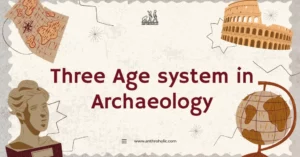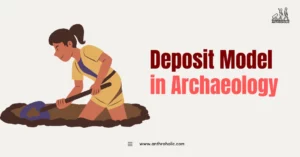AI Answer Evaluation Platform Live Now. Try Free Answer Evaluation Now
Archaeoastronomy
How ancient civilizations “used these occurrences and what role the sky played in their society” is the subject of archaeoastronomy research (often spelled archeoastronomy). It is frequently described as “the study of how humans have understood the sky phenomena, how they have used these phenomena, and what role the sky played in their civilizations” (sometimes written as archaeoastronomy).[1] As current astronomy is a scientific subject, Clive Ruggles contends that it is incorrect to think of archaeoastronomy as the study of ancient astronomy. Rather, archaeoastronomy investigates the complex symbolic methods through which previous people understood celestial phenomena.[2]

Ethnoastronomy, the anthropological study of astronomy in modern civilizations, sometimes coexists with it. Archaeoastronomy is closely related to historical astronomy and the history of astronomy, which study early astronomical activity using literary sources. In order to answer astronomical puzzles, historical astronomy refers to documented chronicles of celestial phenomena.[3]
Archaeoastronomy in Ancient Tradition
From Sicily’s legendary Pizzo Vento, Fondachelli Fantina, the equinox sun sets.
In an attempt to find proof of earlier deeds, archaeoastronomy looks at a variety of disciplines, including astronomy, anthropology, statistics, probability, and history.[4]
Archaeo Astronomers have been attempting to construct a persuasive hypothesis for a very long time by fusing the diverse techniques and data sources of various approaches. [8] Some of the gaps in both cognitive and landscape archaeology are filled by archaeoastronomy. Natural cycle theories may explore a broader region in accordance with physical facts and their relationships to the sky, such as Mayan astronomy and its relevance to agriculture. [9] Another example of how theories of cognition and landscape have come together is the study of the cosmic order encoded in settlement paths.[5]
Archaeoastronomy in understanding civilizations
Archaeoastronomy research may be used to understand all civilizations and historical periods. Even if different civilizations have different perspectives on how the sky looks, there are scientific ways of examining ancient theories that may be done independently of cultural differences. It’s probable that Clive Ruggles’ description of archaeoastronomy as “a topic with unconstrained speculation verging on insanity at the opposite extreme” of good academic work was motivated by the need to strike a balance between its social and scientific components.[6]
The study of ancient societies’ astronomical practices, celestial knowledge, mythologies, religions, and worldviews is known as archaeoastronomy. We coined the phrase “anthropology of astronomy” to distinguish archaeoastronomy from “history of astronomy”.
Archaeoastronomy Structures
You may already be aware of the astrological alignments of a number of notable structures and important historical locations. Just a few examples are the majestic Governor’s Palace at Uxmal, Yucatan, which is in Venus alignment, and the Great Pyramid in Giza, which is correctly oriented in the cardinal directions. We can learn a lot about the development of science and cosmological philosophy throughout history from ancient astronomies and still-existing indigenous societies from throughout the globe.
The 1960s Stonehenge findings gave rise to the fields of archaeoastronomy and ethnoastronomy, which study contemporary native astronomies and are dynamic, varied fields of study that are shedding fresh light on how early humans interacted with the cosmos.
Further Expansion in Archaeoastronomy
The active engagement of specialists and amateurs from many origins and cultures in the present inquiry is one noteworthy feature. Archaeoastronomy has expanded to cover a wide range of related subjects as a result of this connection, including ancient and indigenous calendar systems, ideas of time and space, mathematics, counting systems, geometry, surveying and navigational technologies, geomancy, and the earliest forms of urban planning. When fresh syntheses are more powerful than the sum of their individual parts, we can feel the thrill of the ensuing synergy.
Our study focuses on the astronomical anthropology of diverse civilizations’ worldviews and how astronomy and astronomers fit into those worldviews
See Also
References
[1] Sinclair, R.M. (2005). “The Nature of Archaeoastronomy”. In John W. Fountain; Rolf M. Sinclair (eds.). Current Studies in Archaeoastronomy: Conversations Across Time and Space. Carolina Academic Press. pp. 3–13. ISBN 978-0-89089-771-3
[2] uggles, C.L.N. (2005). Ancient Astronomy. ABC-Clio. ISBN 978-1-85109-477-6.
[3] Bergeron, Jacqueline (1993). “History of Astronomy”. Reports on Astronomy: 461–462. doi:10.1007/978-94-011-1100-3_31. ISBN 978-94-010-4481-3.
[4] Brosch, Noah (29 March 2011). “Thinking about Archeoastronomy”. History and Philosophy of Physics. arXiv:1103.5600.
[5] Chiu, B.C. & Morrison, P. (1980). “Astronomical Origin of the Offset Street Grid at Teotihuacan”. Archaeoastronomy: Supplement to the Journal for the History of Astronomy. 11 (18): S55–S64. Bibcode :1980JHAS.
[6] Carlson, J. (Fall 1999). “Editorial: A Professor of Our Own”. Archaeoastronomy & Ethnoastronomy News (Autumn Equinox). 33. Archived from the original on 2008-05-13. Retrieved 2008-03-22.




